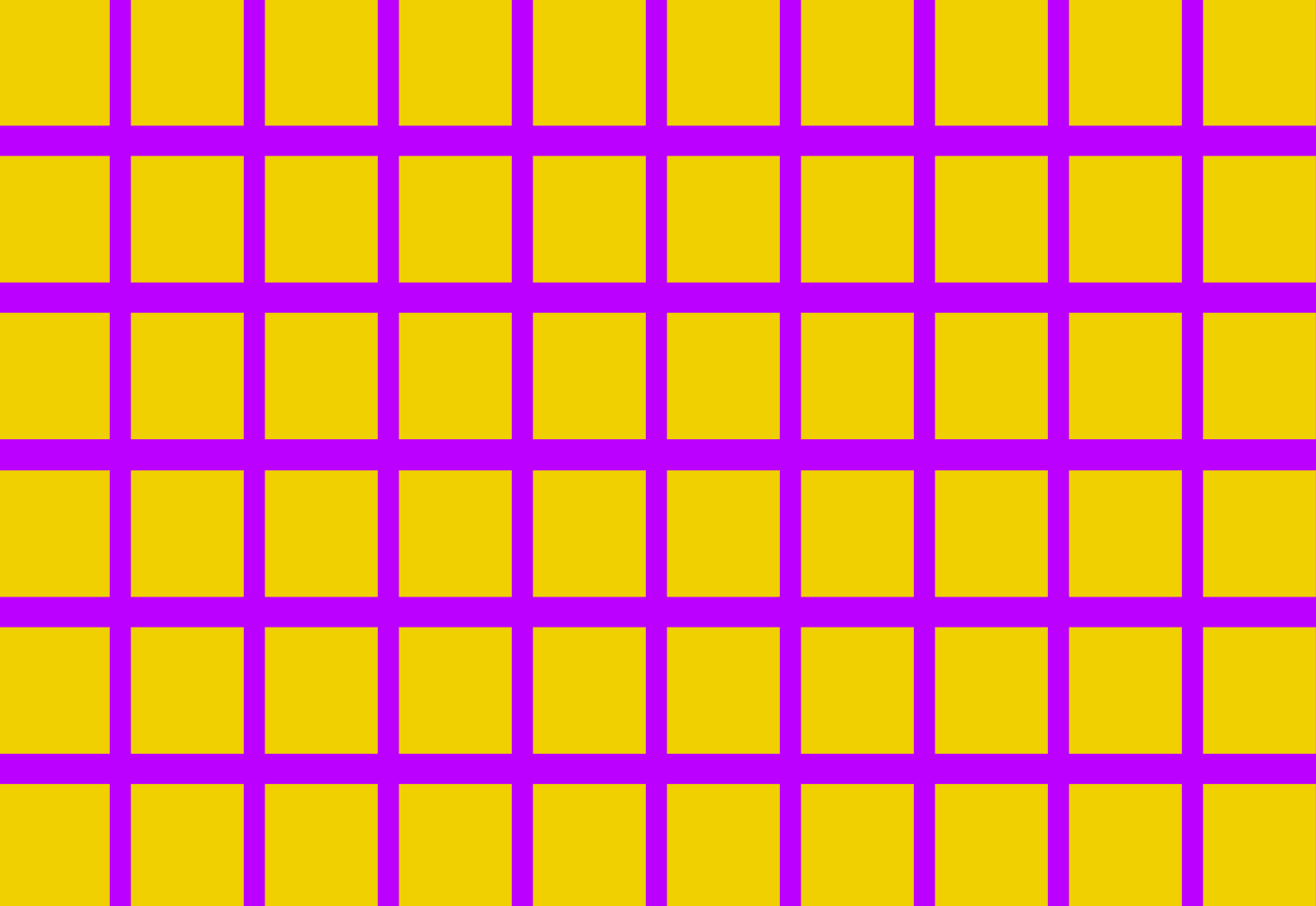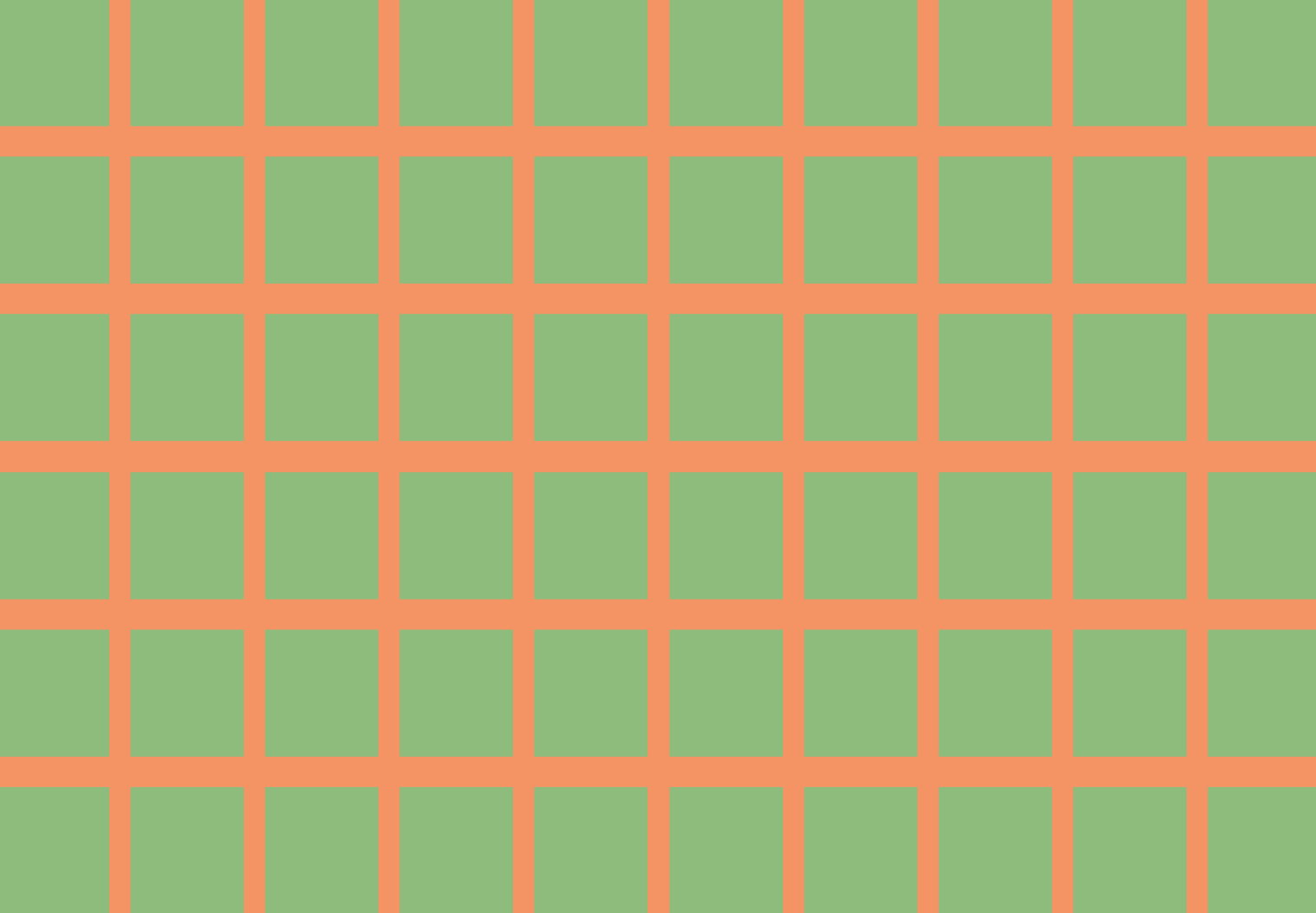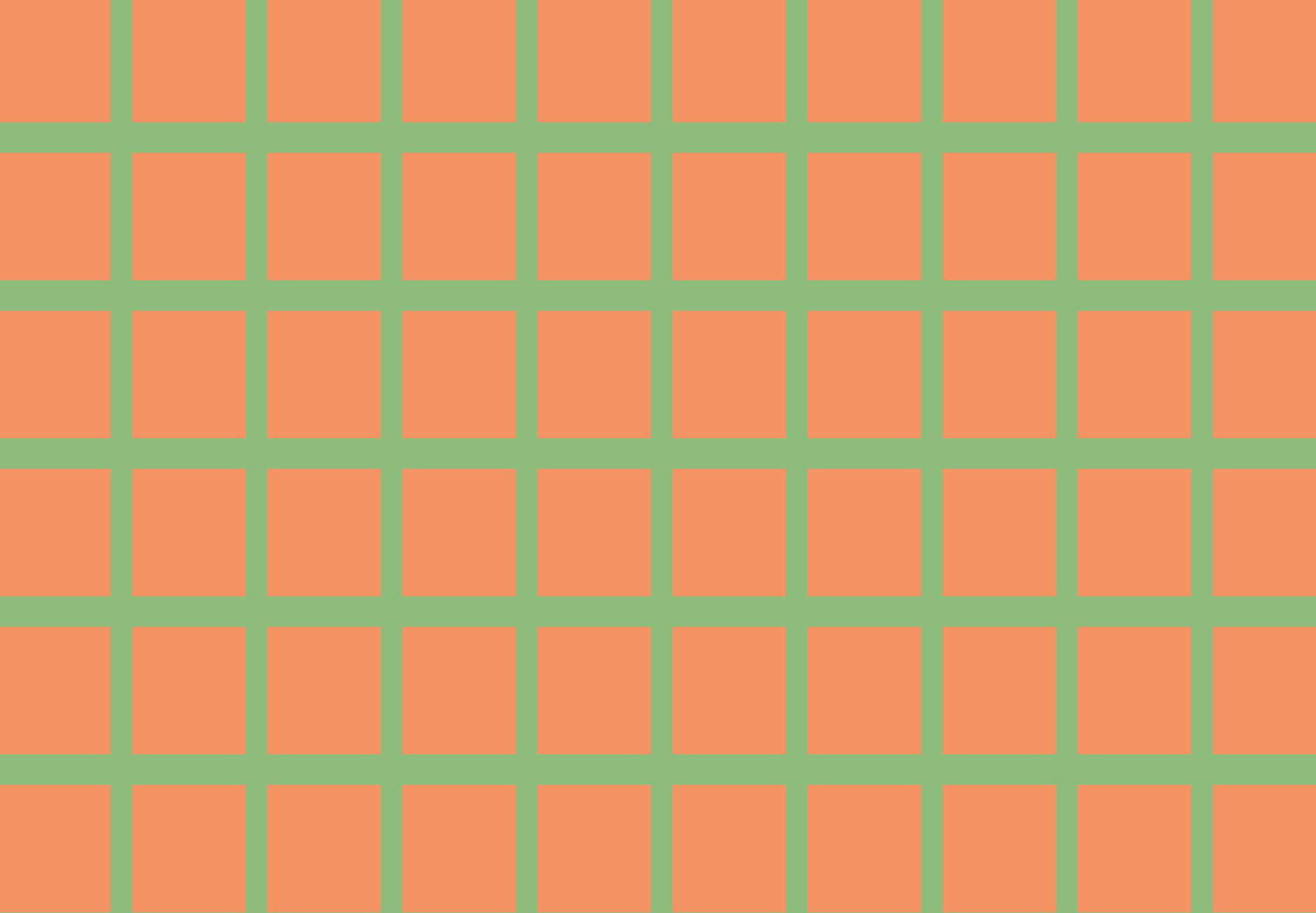9.35 Illusion Laboratory
Spring 2020 Vision Lab
What effect does color palette have on the strength of the Hermann illusion?
The Hermann-grid illusion is a widely known illusion in which the intersection of lines appear to be a different shading than the lines themselves. One classical explanation for this phenomenon is the importance of on-center/off-center retinal ganglion cells. The receptive field is excited less at the intersections, and therefore leading to dark patches at the intersections. This process occurs in the periphery/semi-periphery. because the size of the receptive field is smaller at the fovea, making it less susceptible to the illusion. It should be noted that refutations to this explanation exist, as shown here.
For my variation of this illusion, I chose to look at whether color palette would play any role in the experience of the Hermann grid. I was curious to not only see if the illusion would occur for colors of the same luminance, but also whether there were certain color pairs that would cancel the illusion. My hypothesis was that the introduction of color into the illusion would not disrupt the experience, but the illusion would be less strong because the amount of rods in the periphery outnumber the cones in the periphery, which is what is sensitive to color. For two of the images, I used a purple/yellow pair (188,0,255)/(240,208,0) which contain roughly equal luminance. For the other two images, I used a green-orange pair (141,188,124)/(244,148,101), which I found online to be colorblind-unfriendly (w/ red-green opponent channel).
Purple Squares with yellow lines:

Yellow Squares with purple lines:

Green Squares with red-orange lines (colorblind-unfriendly):

Red-orange Squares with green lines (colorblind-unfriendly):

Hermann L (1870) Eine Erscheinung simultanen Contrastes. Pflügers Archiv für die gesamte Physiologie 3:13–15
Geier J, Bernáth L, Hudák M, Séra L (2008) Straightness as the main factor of the Hermann grid illusion. Perception 37:651–665
